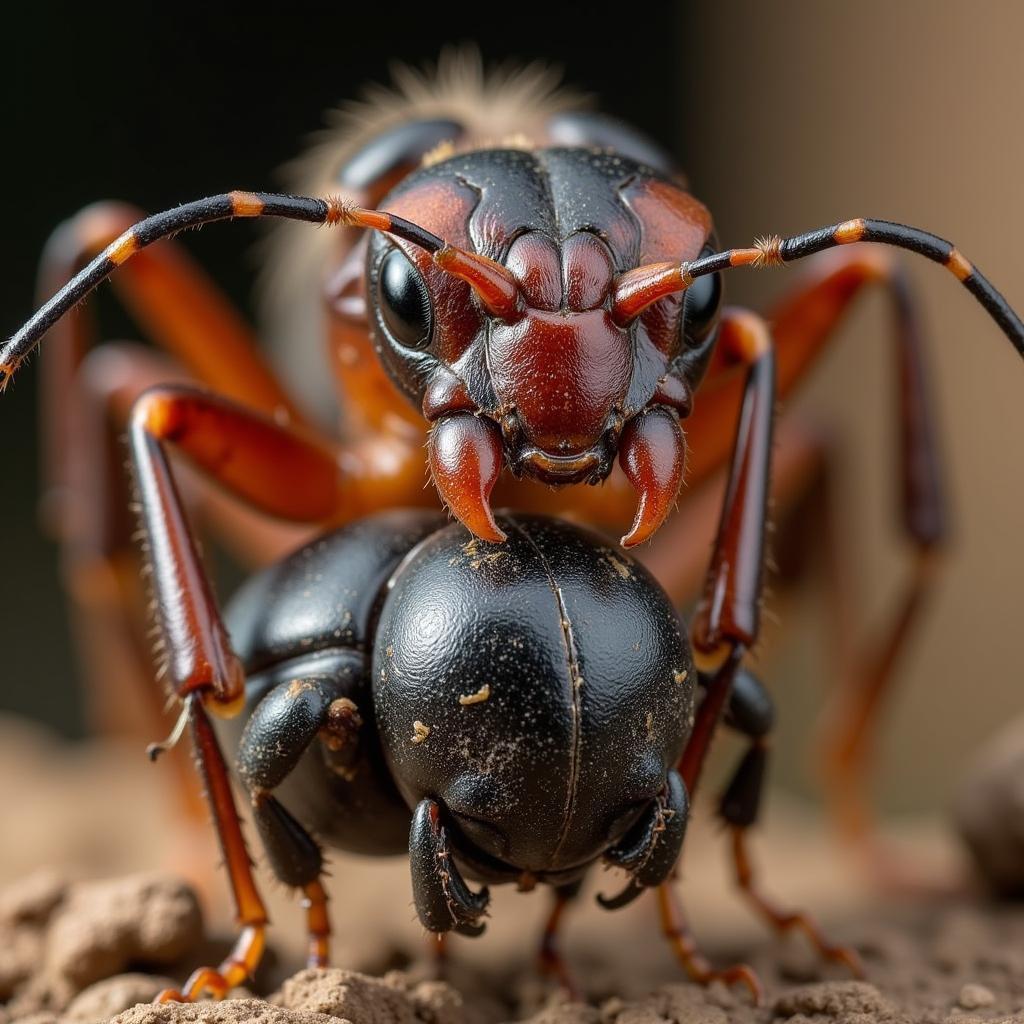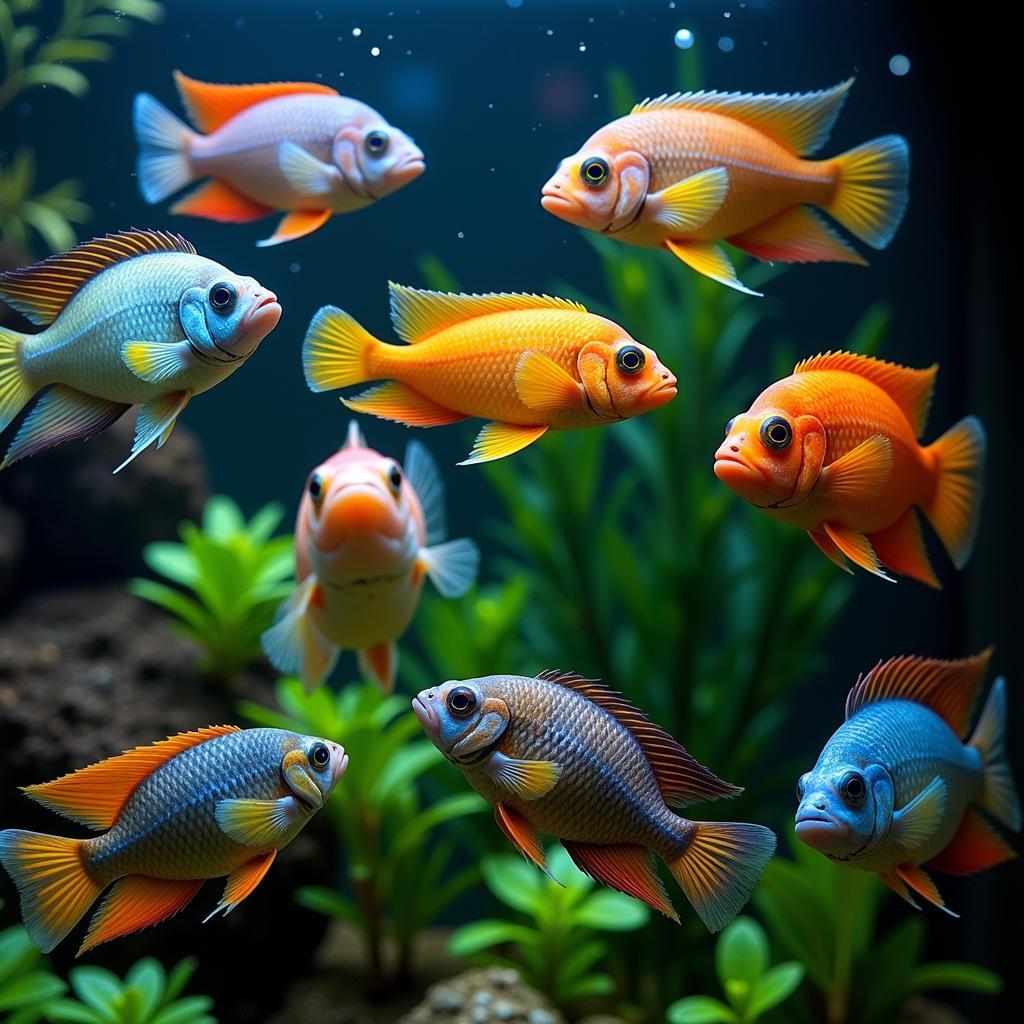African Killer Ants: Tiny Titans of the Insect World
African Killer Ants, a term often used sensationally, refers to several ant species known for their aggressive behavior and potent stings. These formidable insects play a crucial role in African ecosystems, and understanding their behavior is key to appreciating their impact. Let’s delve into the fascinating world of these tiny titans.
The driver ant species of the Dorylus genus are frequently associated with the “killer ant” moniker. Their nomadic lifestyle and massive colony sizes contribute to their fearsome reputation. While individual ants are relatively small, their collective power is immense. They can overwhelm prey much larger than themselves, including small mammals and reptiles. What are their hunting strategies and how does their venom affect their victims?
Decoding the “Killer” Label: Are African Ants Truly Deadly?
The term “killer ants” often evokes images of swarming hordes decimating everything in their path. While this dramatic picture is somewhat exaggerated, it holds a kernel of truth. Driver ants, for example, can be a threat to immobile or weakened animals. However, healthy humans are generally not at risk of being “killed” by these ants, though their stings can be painful and cause allergic reactions in some individuals. You should be more concerned about an africanized honey bee attack.
Understanding Driver Ant Behavior
Driver ants are nomadic hunters, constantly on the move in search of food. Their colonies, numbering in the millions, can consume vast quantities of insects, spiders, and other invertebrates. This makes them vital players in maintaining ecological balance. Their nomadic nature also helps to distribute nutrients across the ecosystem.
 Driver Ant Colony Migration
Driver Ant Colony Migration
The Power of the Collective: Hunting Strategies of African Killer Ants
Driver ants employ a fascinating array of hunting strategies. Their sheer numbers allow them to overwhelm prey, using their powerful mandibles to tear flesh. They also communicate effectively through chemical signals, coordinating their attacks with remarkable precision. What about their venom? How does it contribute to their hunting success?
The Venom: A Closer Look
Driver ant venom contains potent toxins that paralyze and subdue prey. While not typically lethal to humans, the venom can cause intense pain, swelling, and other localized reactions. For smaller animals, however, the venom can be fatal. It’s important to note that different ant species exhibit variations in venom composition and potency.
 Driver Ant Attacking Insect
Driver Ant Attacking Insect
Many people are interested in documentaries about aggressive insect species, such as the African killer bees documentary.
Beyond the Dorylus: Other Aggressive African Ant Species
While driver ants are the most commonly associated with the “killer ant” label, other African ant species also display aggressive behavior. Matabele ants, for example, are specialized termite hunters. Their raids on termite mounds are spectacular displays of coordinated attack. They also possess a painful sting, used primarily for defense.
The Matabele Ants: Termite Specialists
Matabele ants exhibit a remarkable level of social organization. They have specialized roles within the colony, including scouts, soldiers, and nurses. Their raids on termite mounds are meticulously planned and executed, demonstrating their sophisticated communication and teamwork.
Some people even keep amphibians like African dwarf frogs keep dying as pets. Art enthusiasts are often intrigued by traditional artifacts like the African crocodile mask. While studying the declining population of certain species is also crucial, resources like the African elephant population decline graph can be insightful.
Conclusion
African killer ants, while often portrayed as fearsome predators, play a crucial role in African ecosystems. Their aggressive hunting behavior and potent stings are essential for their survival and contribute to maintaining ecological balance. Understanding these fascinating insects is key to appreciating their importance and dispelling the myths surrounding them. By recognizing the vital role they play, we can move beyond the sensationalized label of “killer ants” and appreciate these tiny titans for their remarkable adaptations and ecological contributions.
FAQ
- Are African killer ants deadly to humans? No, healthy humans are generally not at risk of death from these ants, though their stings can be painful.
- What are driver ants? Driver ants are a genus of army ants known for their nomadic lifestyle and large colonies.
- How do driver ants hunt? They hunt in large swarms, overwhelming their prey with their numbers and powerful mandibles.
- What is the purpose of their venom? Their venom paralyzes and subdues prey.
- What other aggressive ant species are found in Africa? Matabele ants, specialized termite hunters, are another example.
- What role do these ants play in the ecosystem? They are crucial for maintaining ecological balance and nutrient distribution.
- How big are driver ant colonies? They can number in the millions.
Common Scenarios and Questions:
- Scenario: You encounter a swarm of driver ants while hiking. Question: What should you do? Answer: Avoid the swarm and do not disturb them. If you are stung, seek medical attention if necessary.
- Scenario: You find driver ants in your home. Question: How can you get rid of them? Answer: Contact a pest control professional experienced with ant infestations.
Further Exploration:
Consider reading about ant communication, ant colony structure, and the role of ants in various ecosystems.
Need Help?
For further assistance, please contact us at Phone: +255768904061, Email: kaka.mag@gmail.com, or visit us at Mbarali DC Mawindi, Kangaga, Tanzania. We have a 24/7 customer service team available.


